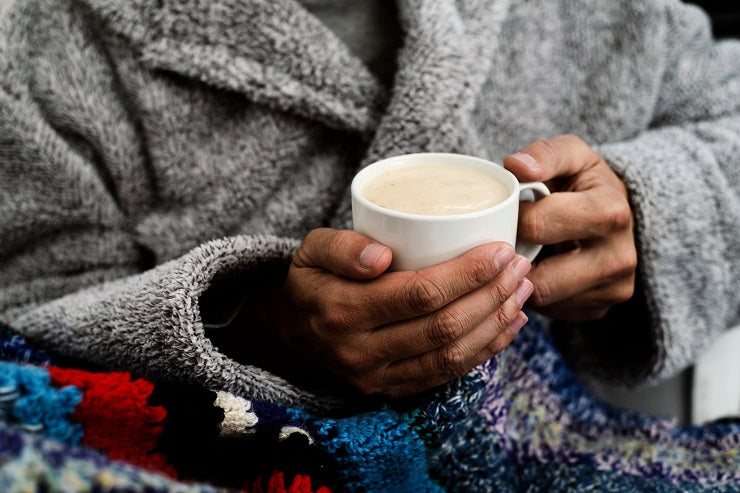If you want to stay comfortable in your home this winter, there are a number of simple tasks you can complete now — before the colder temperatures of the late fall and winter arrive. Once these tasks are completed, you can rest easy knowing that your family will be cozy and stay cozy until warmer weather comes back once again.
Tip #1: Schedule yearly maintenance for your furnace.
Unfortunately, many people think that they don’t need to make an annual appointment for a heating system tune-up if their furnace seems to be working fine. The truth is, however, that most furnaces don’t show any obvious warning signs of a problem until the system experiences an untimely and unexpected breakdown. When this happens, your family is left to suffer in a cold, uncomfortable home until a professional heating technician can diagnose and take care of the problem. To prevent this very thing from happening to your family, it’s crucial that you make an appointment every year for a furnace maintenance tune-up.
During this maintenance appointment, a skilled and experienced technician will carefully and thoroughly inspect (and clean) all working components inside of your unit. He or she will easily be able to determine if there is a potential problem that could ultimately lead to a breakdown if not taken care of ASAP. Also, the technician will ensure that your unit is operating safely. This means that he or she will check for any gas leaks (carbon monoxide or natural gas) and will also check for any damaged electrical wiring that could potentially lead to a fire.
When your furnace is clean and working at its best, it will be efficient at keeping your family warm and toasty all season long!
Tip #2: Check for unevenly heated rooms.
If you’ve noticed that there are some areas of your home that don’t feel as warm as they should, even when the furnace is running, there’s some easy troubleshooting you can do on your own to attempt to get to the bottom of the problem.
Often, a colder than usual room is caused by blocked vents or an obstruction. Go through each room of your home to see if furniture, curtains, rugs, etc. are blocking air flow from your vents. If so, free up the area so there isn’t an obstruction. When your vents are blocked, warm air from your furnace can’t easily make its way into all spaces of your home, thus leading to uncomfortable, cold problem areas.
Freeing up blocked vents will also help your furnace operate more efficiently. If your thermostat is in one of these spaces with a covered vent, it may mistakenly read the temperature of your home to be much colder than it really is — triggering your furnace to run more often than it should to try and warm your space. This could lead to premature wear and tear on your unit and also higher energy bills.
Tip #3: Winterize your window and door frames.
Many people are shocked by how much cold air can get into their home through gaps in window and door frames. The framing around your windows and doors was installed with a special weatherstripping material. As time passes, these seals become weak in places and can allow warm air from inside your home to escape, and cold outdoor air to get inside. This can lead to a cold, uncomfortable and drafty home.
The solution to the problem is quite simple. To determine whether you have gaps in your frames, run your hand around the perimeter of your windows and doors. Make note of any spots where you can feel air passing through. These are the areas where you’ll need to add extra sealant or weatherstripping to stop the air loss. You can also check for openings around pipes or vents leading to the outside of your home. These areas often need sealant to be added, as well.
Tip #4: Add extra insulation, if necessary.
As we all know, hot air rises. If you have an attic space that isn’t properly insulated, heat from your furnace can easily escape your home through the roof. The solution to the problem will be to add more insulation to your attic. This won’t just help to keep your home warmer and more comfortable, but it could also prevent your heater from cycling on as often to try and maintain the temperature set on your thermostat.
To determine whether you need more insulation in your home, consult an insulation expert in your area. He or she will know the best R-value of insulation to use in your home based on the area in which you live. This is often determined by how cold winters are in your area.
Tip #5: Prevent drafts.
Few things are more uncomfortable than a cold, drafty space. Fortunately, there are a few easy things you can do to prevent these drafts. First, keep your exterior doors closed. This includes your entry door, side doors, garage doors, basement doors, etc. Even if you have a pet who tends to like “people watching” from these doors, you need to keep them closed to prevent warm air from escaping, and cold air from getting inside.
Additionally, make sure your fireplace damper is closed when NOT in use. Leaving this area open could allow a substantial amount of heated air to escape, and also will let in a lot of frosty outdoor air. Just don’t forget to open it once again when your family decides to use the fireplace.


